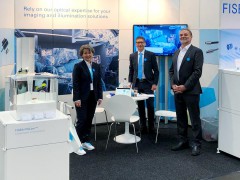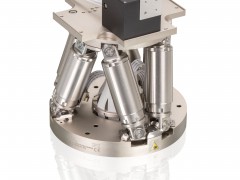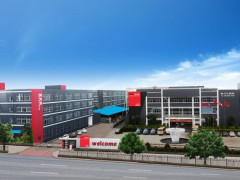Yang Gang, President of TRUMPF China: No large-scale consolidation has occurred in the machine tool
source:21st Century Business Herald
keywords:
Time:2025-10-14
Source: 21st Century Business Herald 11th Oct 2025
The global machine tool industry still faces enormous challenges from low-price and homogeneous competition, making industrial transformation and upgrading an urgent task.
Recently, Yang Gang, President of Trumpf China, accepted an interview with reporters from the 21st Century Business Herald again, a year after his last interview. He pointed out that in the past two years, the development model of China’s machine tool market—once oriented toward scale for cost optimization—has undergone certain changes. Particularly as the demographic dividend weakens and market demand shifts toward low-volume production, China’s machine tool industry is entering a phase of consolidation.
Trumpf, a leading global German enterprise in laser and machine tool equipment, entered the Chinese market over 20 years ago and introduced sheet metal equipment. As one of the initiators of Industry 4.0, Trumpf not only regards China as a key sales market but has also deeply localized its R&D and production. According to information obtained by 21st Century Business Herald reporters, in the past year, Trumpf China achieved sales of 515 million euros and realized 30% local production.
However, amid fierce competition in the manufacturing sector, the "high-mix, low-volume" production model brings enterprises flexible market adaptability, while also posing challenges such as low production efficiency, difficulty in ensuring precision, and high costs. Meanwhile, in the past two years, "involution" has spread to the machine tool industry, creating multiple challenges: price competition squeezes profit margins, and enterprises’ efforts to reduce costs and improve efficiency test the performance of their products and the resilience of their supply chains.
In a previous exclusive interview with the 21st Century Business Herald, Yang Gang analyzed that the global market demand for laser and machine tool equipment is shifting from single, high-volume production needs to high-mix, low-volume needs, as well as personalized demands. This shift has led to significant changes on the supply side.
For example, due to the relatively low threshold of fiber laser cutting technology—compared with CO₂lasers, it is easier to adopt—many enterprises have been able to produce basically usable laser cutting machines, driving the rapid growth of the industry.
But in Yang Gang’s view, this growth has also led to homogeneous competition in the market, which eventually evolved into a "price war."
“As far as this year is concerned, this trend of (homogeneous) competition is still continuing,” Yang Gang said. He believes that the industry will need to undergo large-scale consolidation in the next few years.
In fact, industry consolidation is inevitable.
On one hand, with the rapid development of intelligent manufacturing equipment and the deep integration of the new generation of information technology with manufacturing, the level of intelligence in laser cutting machines and welding processes continues to improve—a major trend in the current transformation and upgrading of the machine tool industry. Behind this trend is also an upgrading of demand.
For instance, in traditional robotic welding processes, the teaching process is cumbersome and time-consuming, suitable for large-scale production of single, standardized products. However, current demand has shifted toward diversification and customization, requiring the ability to quickly adapt to product changes.
On the other hand, the high-quality development of the industry must be based on innovation. “If we cannot solve the problem of low-price competition in the long run, and cannot ensure that our industry innovates on the basis of profitability, this will inevitably shake the foundation of the industry’s development,” Yang Gang argued.
Yang Gang predicted that large-scale consolidation in the machine tool industry is expected to occur within the next two to three years.
The content of the above article is sourced from the 21st Century Business Herald.
- RoboSense is to Produce the First Chinese Multi-beam LiDAR
- China is to Accelerate the Development of Laser Hardening Application
- Han’s Laser Buys Canadian Fiber Specialist CorActive
- SPI Lasers continues it expansion in China, appointing a dedicated Sales Director
- Laser Coating Removal Robot for Aircraft
 FISBA exhibits Customized Solutions for Minimally Invasive Medical Endoscopic Devices at COMPAMED in
FISBA exhibits Customized Solutions for Minimally Invasive Medical Endoscopic Devices at COMPAMED in New Active Alignment System for the Coupling of Photonic Structures to Fiber Arrays
New Active Alignment System for the Coupling of Photonic Structures to Fiber Arrays A new industrial compression module by Amplitude
A new industrial compression module by Amplitude Menhir Photonics Introduces the MENHIR-1550 The Industry's First Turnkey Femtosecond Laser of
Menhir Photonics Introduces the MENHIR-1550 The Industry's First Turnkey Femtosecond Laser of Shenzhen DNE Laser introduced new generation D-FAST cutting machine (12000 W)
more>>
Shenzhen DNE Laser introduced new generation D-FAST cutting machine (12000 W)
more>>





